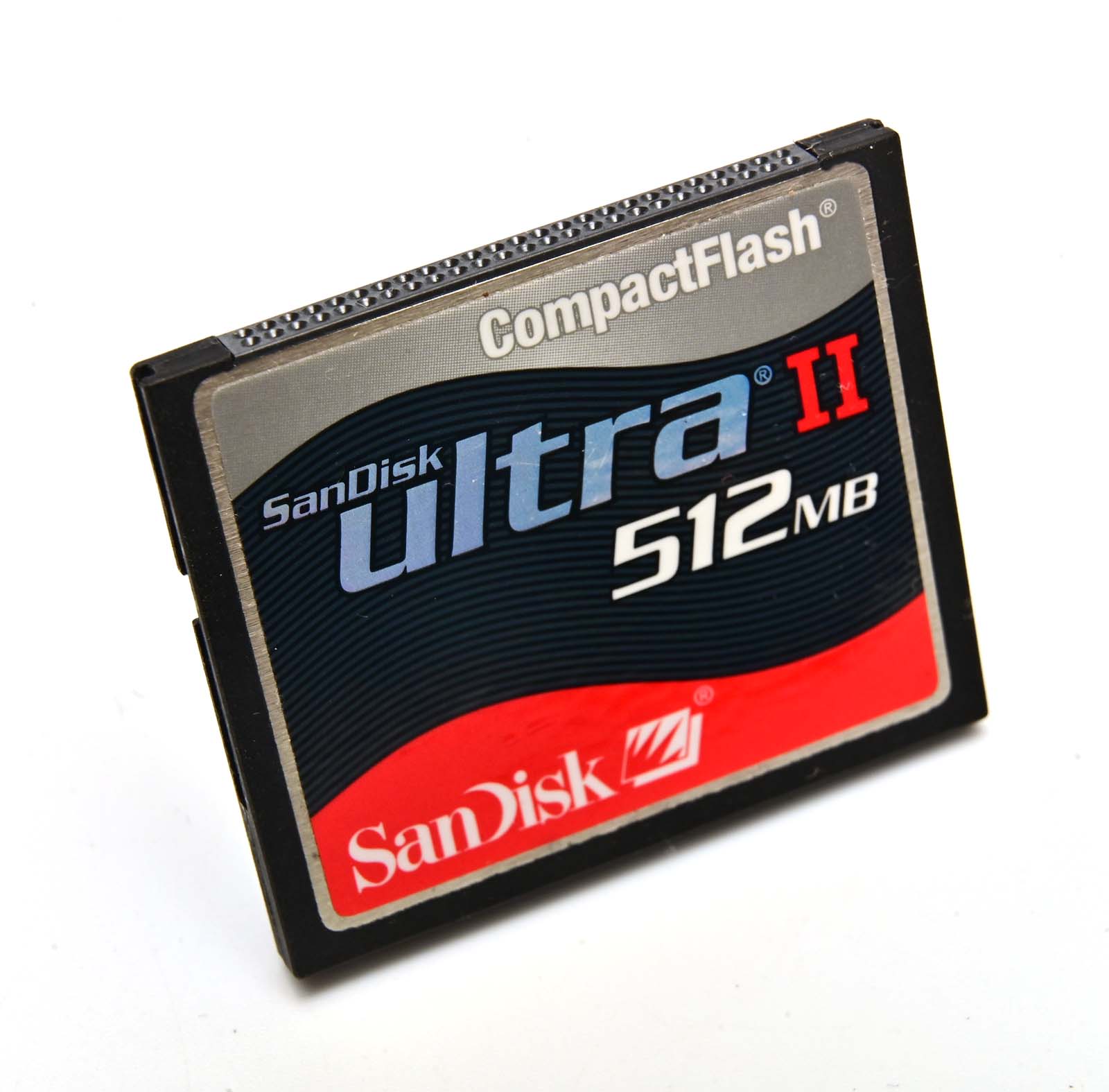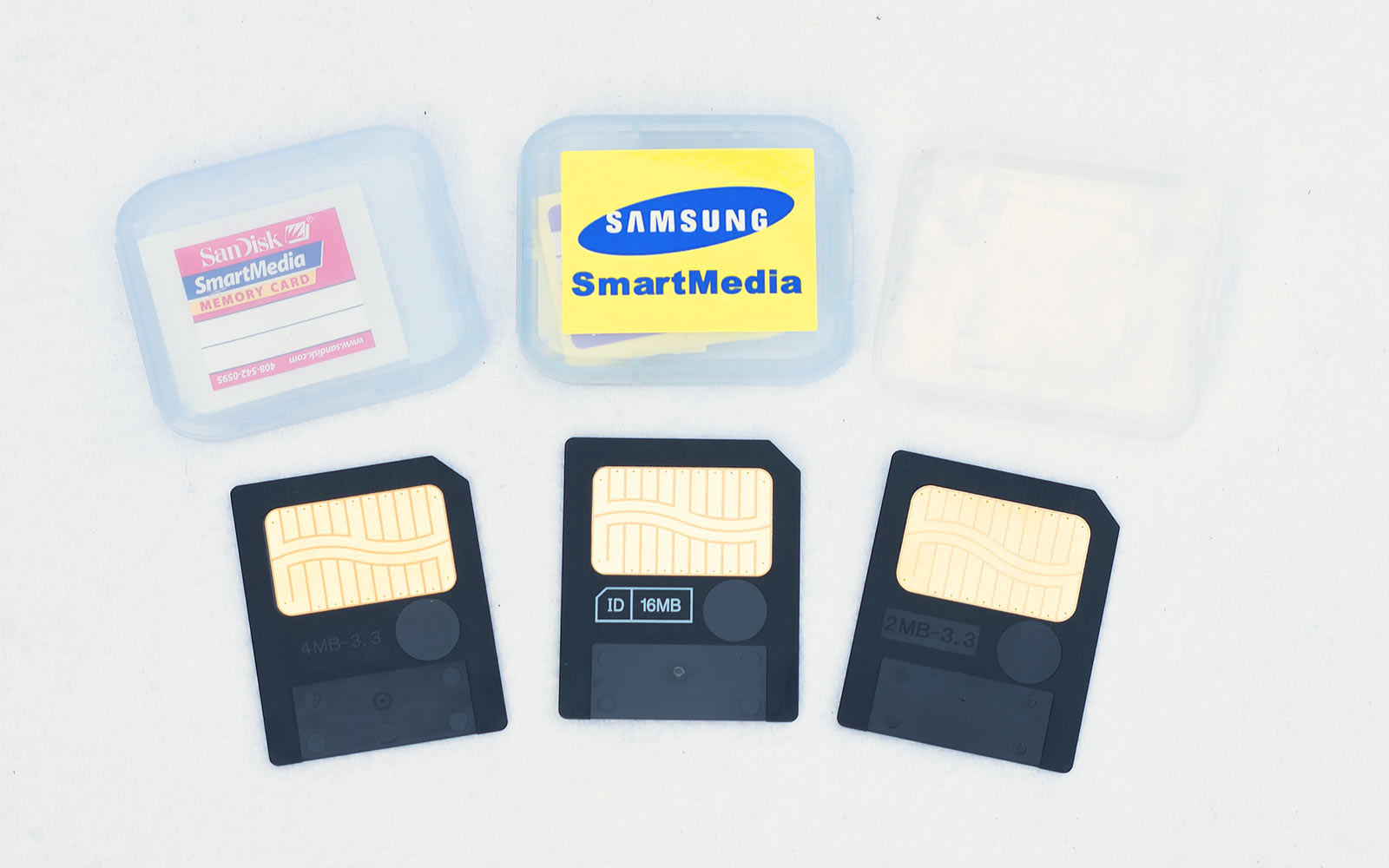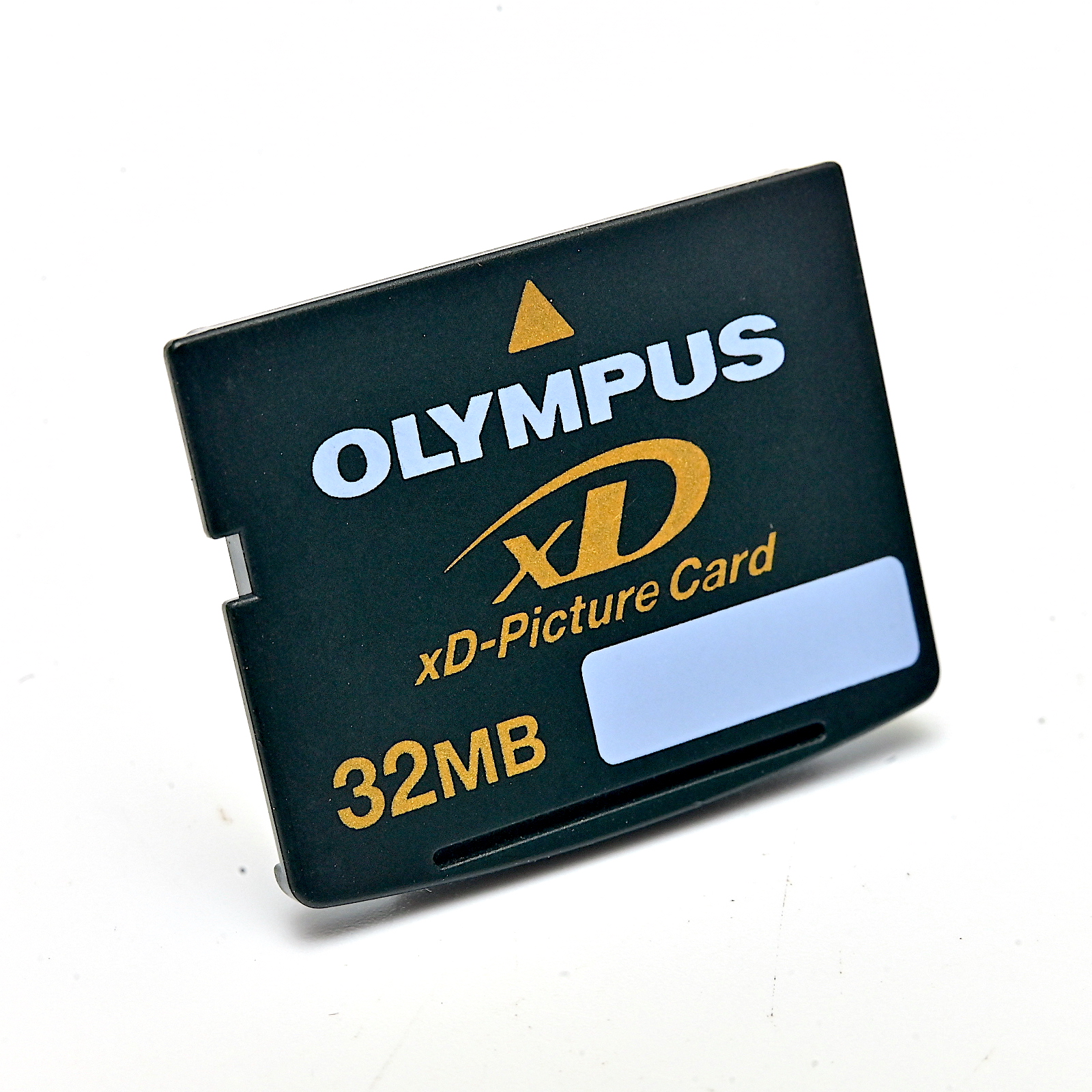Guide to digital camera memory cards
Andrew Noakes
29 December 2022
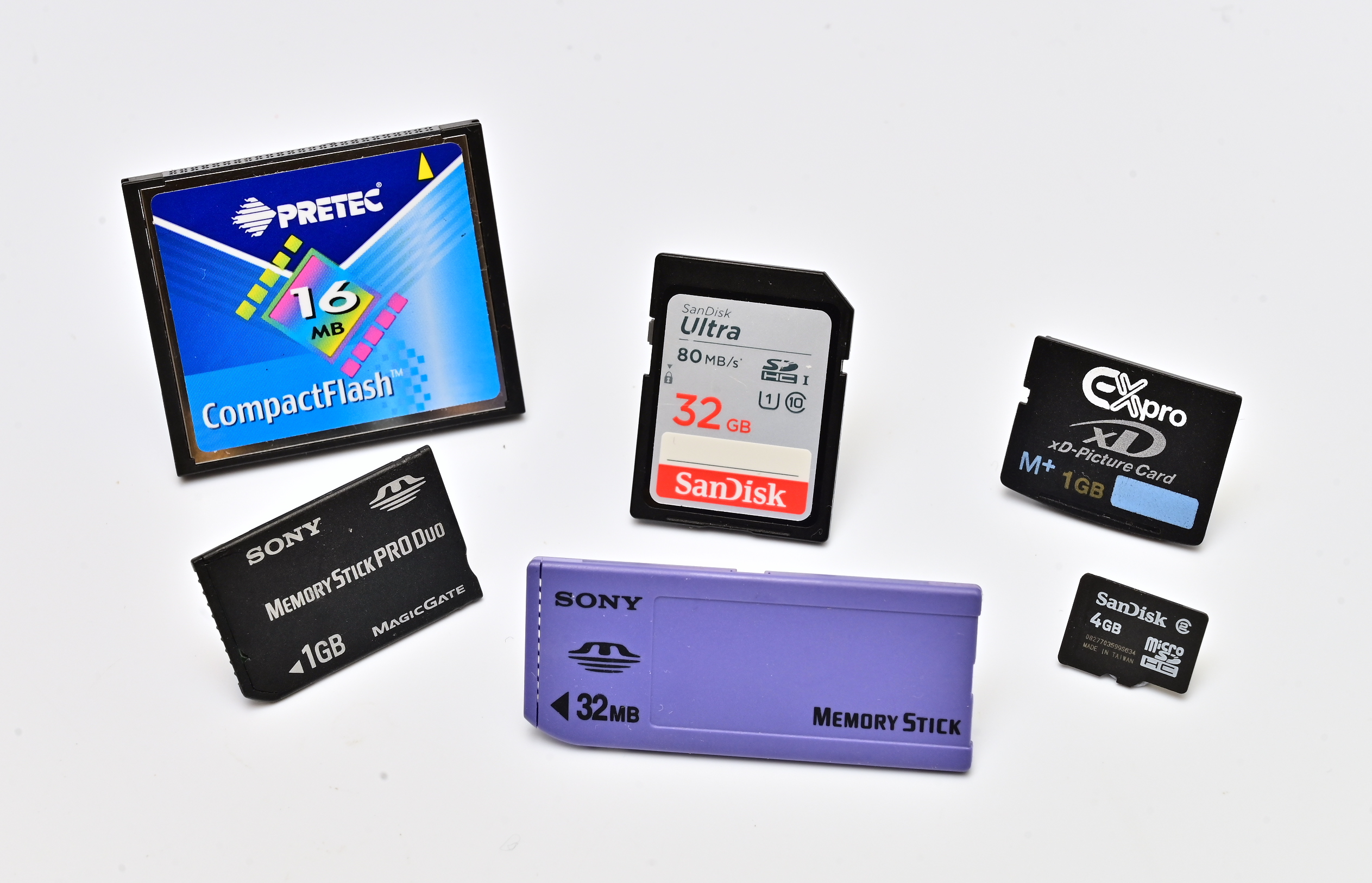
Memory cards are the essential accessory for digital cameras, but it's not always easy to know which card is the right one to choose. Here's our guide to the main memory card formats used by digital cameras over the years, to help you identify the right card for your camera.
Compact Flash (CF)
Introduced: 1994
Created by: SanDisk
Used by: Many camera brands
Size: Type I: 43 x 36 x 3.3mm; Type II: 43 x 36 x 5mm
Capacity: 2MB - 512GB
One of the earliest memory card formats and still used in pro Nikon DSLRs up to the D5 in 2020. Larger and heavier than other cards, generally robust but the socket the card fits into has numerous tiny pins which can easily be bent or broken. Support for the thicker Type II, used for miniature hard disk drives instead of flash memory, is patchy.
CFast
Introduced: 2009
Created by: CompactFlash Association, including Canon, Nikon, Sony
Used by: Camera brands and games consoles
Size: 42.8 x 36.4 x 3.9mm
Capacity: 2MB - 512GB
Similar size and shape to CompactFlash, but not compatible. Uses the SATA interface for higher data transfer speeds.
CFexpress Type B
Introduced: 2017
Created by: CompactFlash Association, including Canon, Nikon, Sony
Used by: Camera brands
Size: 38.5 x 29.8 x 3.8mm
Capacity: 2MB - 512GB
CFexpress Type B (there's also Types A and C) are compatible with XQD card devices and offer faster data transfer rates.
Memory Stick
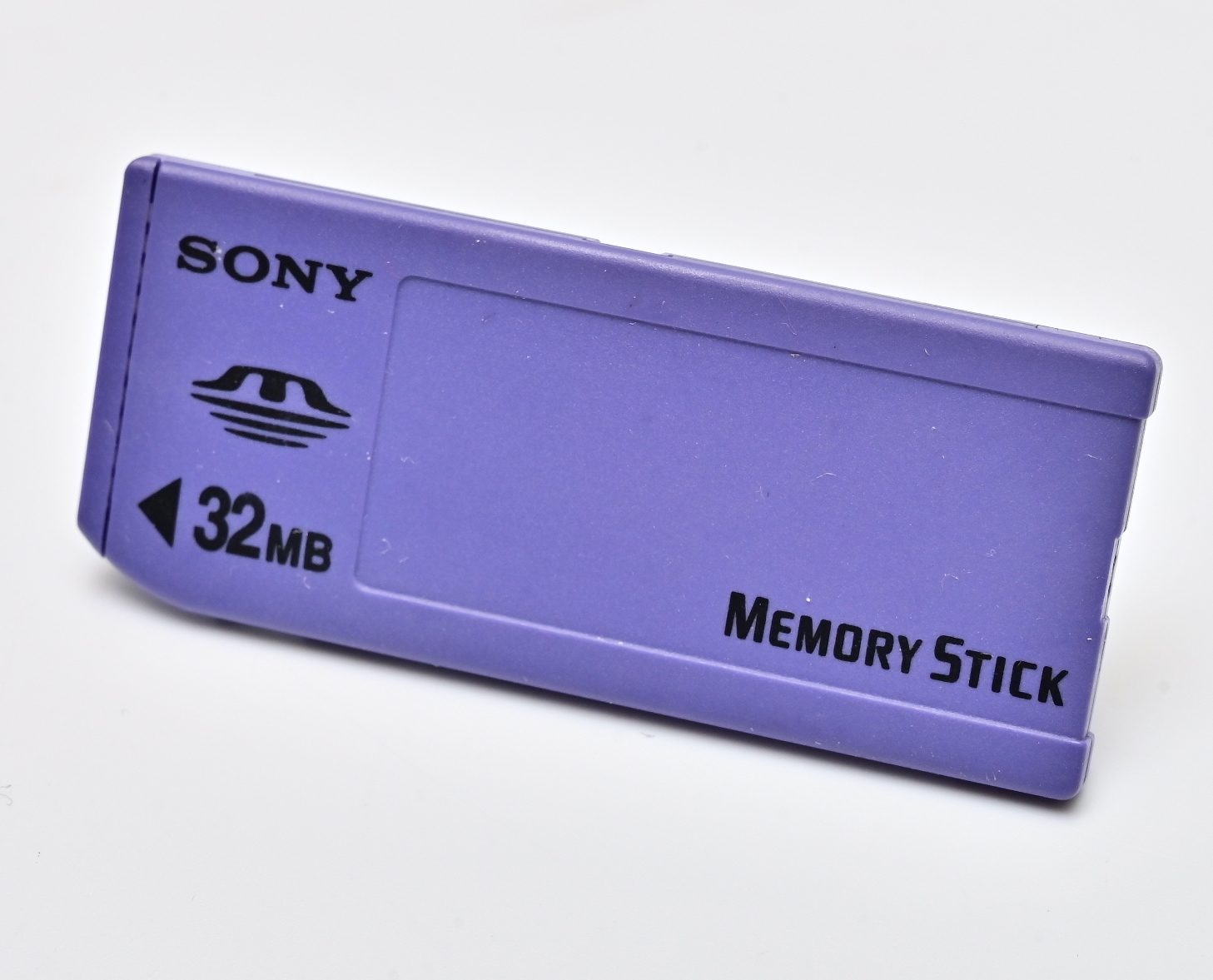
Memory Stick/Memory Stick PRO
Introduced: 1998 (PRO 2003)
Created by: Sony
Used by: Sony
Size: 50 x 21.5 x 2.8mm
Capacity: Up to 128MB (Pro: 2GB)
Used on a wide range of Sony devices, from Cyber-shot digital cameras and Handycam camcorders to TVs and PlayStation consoles. From 2010 Sony started to adopt SD cards and seems to have abandoned the format.
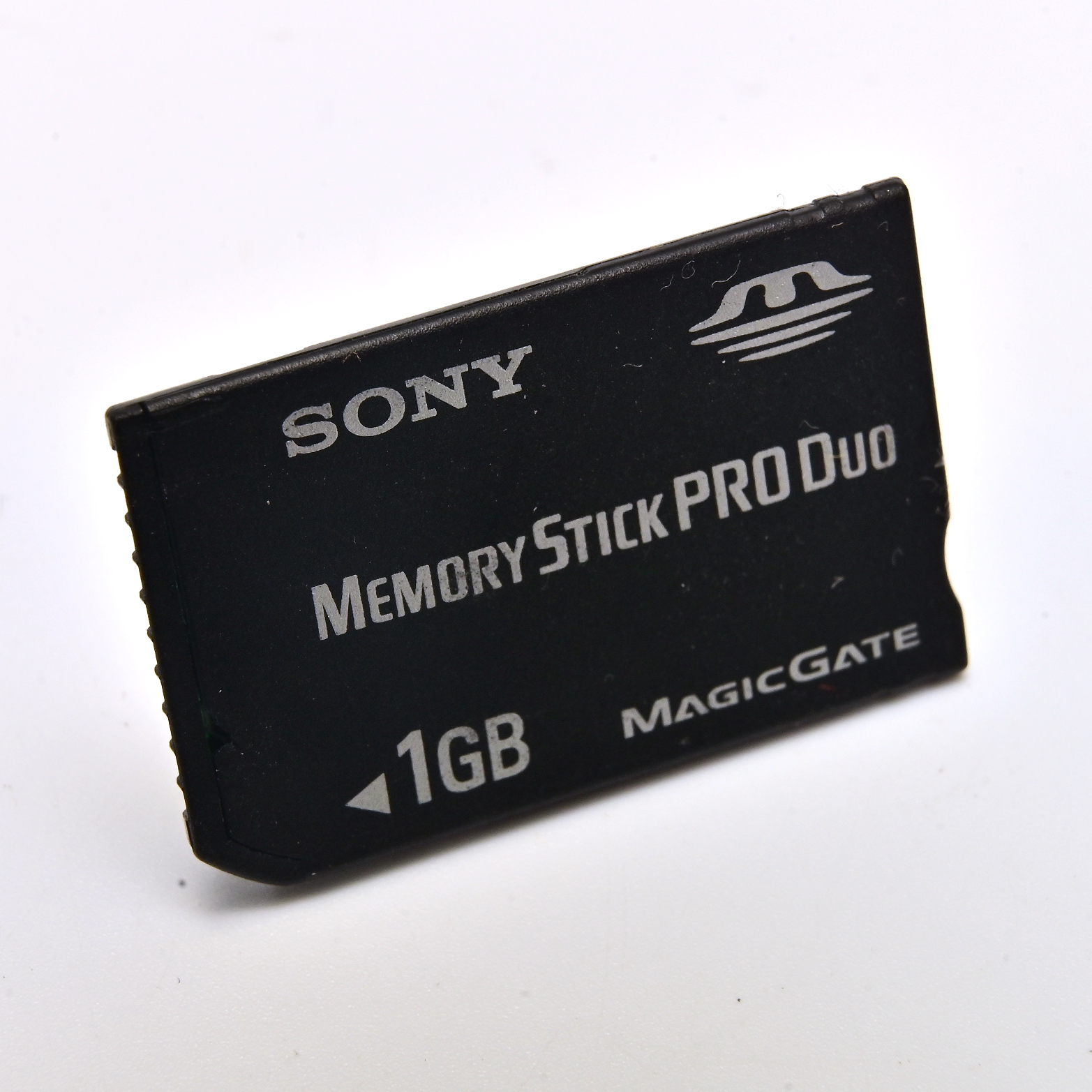
Memory Stick Duo/PRO Duo
Introduced: 2003
Created by: Sony
Used by: Sony
Size: 31 x 20 x 1.6mm
Capacity: Up to 128MB (Pro 32GB)
Significantly smaller than the original Memory Stick for use in cameras, phones and the PlayStation Portable. PRO Duo offers faster data transfer and much larger capacity.
MultiMediaCard
Introduced: 1997
Created by: Siemens, SanDisk
Used by: Canon and other camera brands
Size: 24 x 32 x 1.4mm
Capacity: Up to 16GB
Same size as an SD and largely compatible, though the layout of the contacts on the back is slightly different.
Secure Digital (SD)
SD Card
Introduced: 1999
Created by: SanDisk, Panasonic, Toshiba and Kodak
Used by: Most camera brands
Size: 32 x 24 x 2.1mm
Capacity: Up to 2GB
Convenient, reliable and relatively cheap, the SD card has become the most widely used of the digital camera cards. Original version limited to 2GB, but still useful for older cameras that cannot use the later, larger-capacity SD cards.
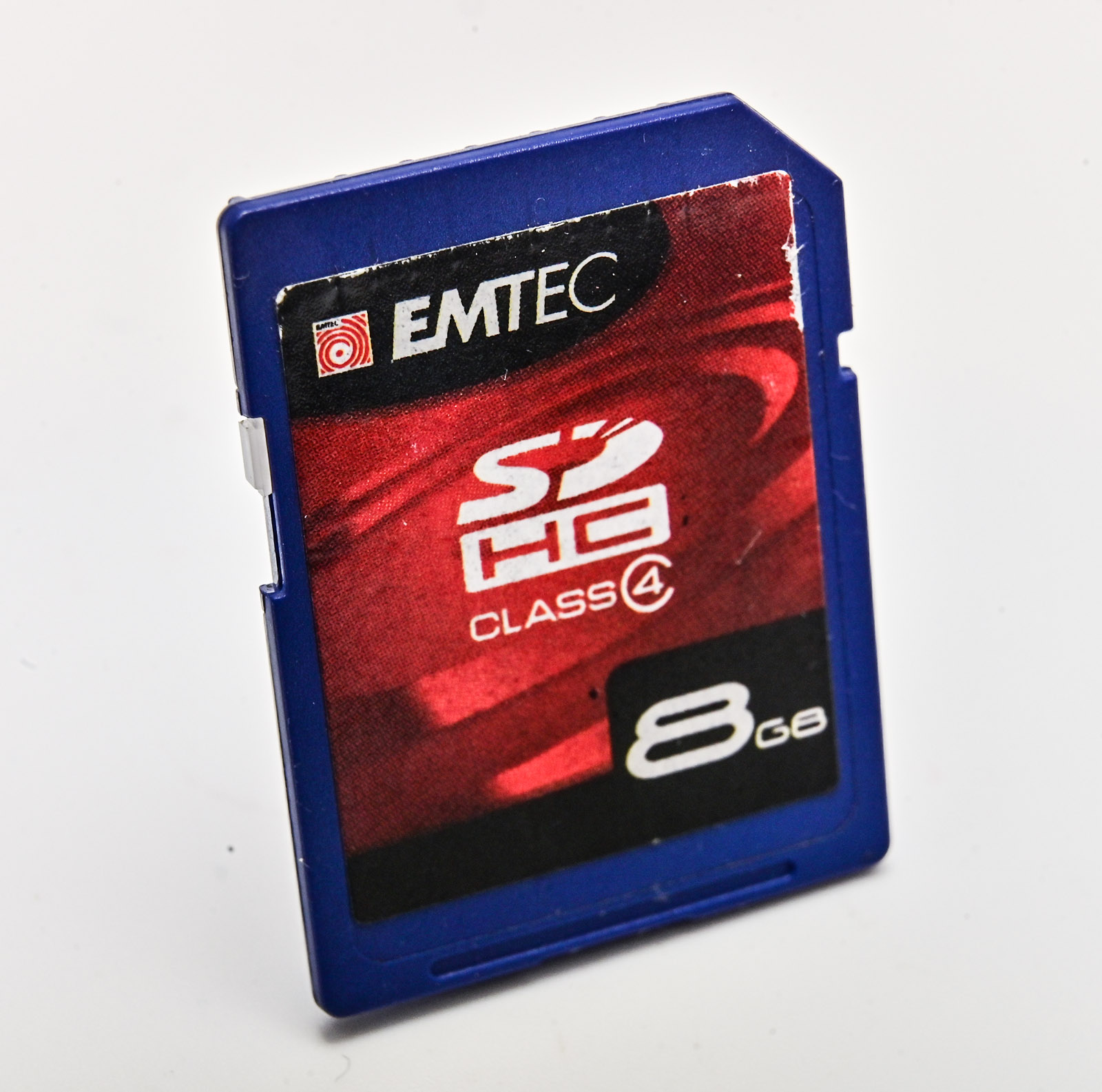
SDHC Card
Introduced: 2006
Created by: SD Association including SanDisk, Panasonic and Toshiba
Used by: Most camera brands
Size: 32 x 24 x 2.1mm
Capacity: Up to 32GB
Larger-capacity SD cards developed for a new generation of digital cameras producing bigger images and shooting video. Those devices can still use the earlier cards, but soon run out of space.
SDXC Card
Introduced: 2009
Created by: SD Association including SanDisk, Panasonic and Toshiba
Used by: Most camera brands
Size: 32 x 24 x 2.1mm
Capacity: Up to 2TB
A further extension to the SD card standard, producing cards with capacities up to 2TB (2000GB). There's also a rare SDUC specification for cards between 2TB and 128TB, introduced in 2018.
Micro SD Card
Introduced: 2005
Created by: SD Association including SanDisk, Panasonic and Toshiba
Used by: Mobile phones, tablets and some cameras
Size: 11 x 15 x 1mm
Capacity: 32MB - 2TB
Mini SD cards, half the size of the regular SD, were introduced in 2003 but a more significant step in miniaturisation came with the MicroSD in 2005. Its small size made it useful for many mobile devices including cameras, phones, audio recorders and more. Capacity has increased in line with full-size SD cards and today MicroSD is the default for removable storage on hand-held devices.
SmartMedia
Introduced: 1995
Created by: Toshiba
Used by: Fujifilm and other camera brands
Size: 37 x 45 x 0.76mm
Capacity: Up to 128MB
Originally touted as a tiny replacement for the 3.5in floppy disk (hence the cut-off corner) the SmartMedia card was small and relatively cheap. Confusingly the original cards were 5-volt and later ones 3.3-volt. Older devices often don't support the newer cards.
xD-Picture Card
Introduced: 2002
Created by: Fujifilm, Olympus
Used by: Fujifilm, Olympus
Size: 25 x 20 x 1.78mm
Capacity: Up to 2GB
Neat, convenient card but struggled to gain a foothold in the market against the established SD card and never gained acceptance beyond the two original partners involved in its development, Fujifilm and Olympus. Expensive for their capacity today, even secondhand, and not as robust as SD cards.
XQD
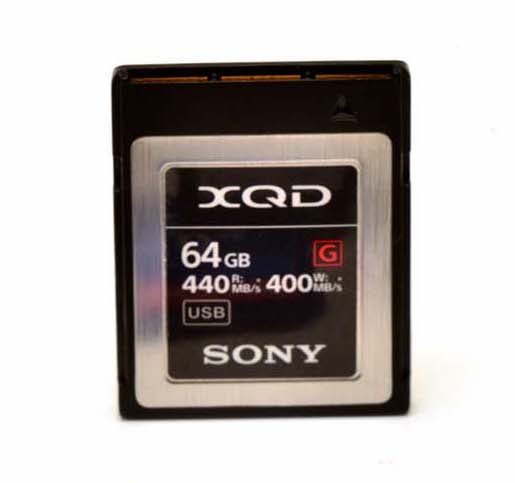 Introduced: 2012
Introduced: 2012
Created by: Nikon, SanDisk, Sony
Used by: Nikon, Sony
Size: 29.8 x 38.5 x 3.8mm
Capacity: 8GB - 2TB
Used in high-end Nikon cameras from 2012, but now being superceded by the compatible CFexpress card which offers faster data transfer.
What size memory card do I need?
Bigger is better, as a bigger card gives you space for more pictures and more video before it fills up.
Early digital cameras often can't use the extended and enlarged formats that were invented after them, so with these cameras you are restricted to using relatively small cards. Generally you will be working with smaller images anyway, so it's often not as big a handicap as it sounds.
As a guide, here are suggested minimum card sizes for different image sizes. If you tend to shoot lots of images in one session, or shoot big RAW files, you'll find it much more convenient to go for a bigger card.
| Megapixels | File size | Card size |
|---|---|---|
| 1MP | 300KB | 16MB |
| 3MP | 1MB | 64MB |
| 6MP | 2MB | 128MB |
| 12MP | 4MB | 256MB |
| 18MP | 6MB | 512MB |
| 24MP | 8MB | 1GB |
